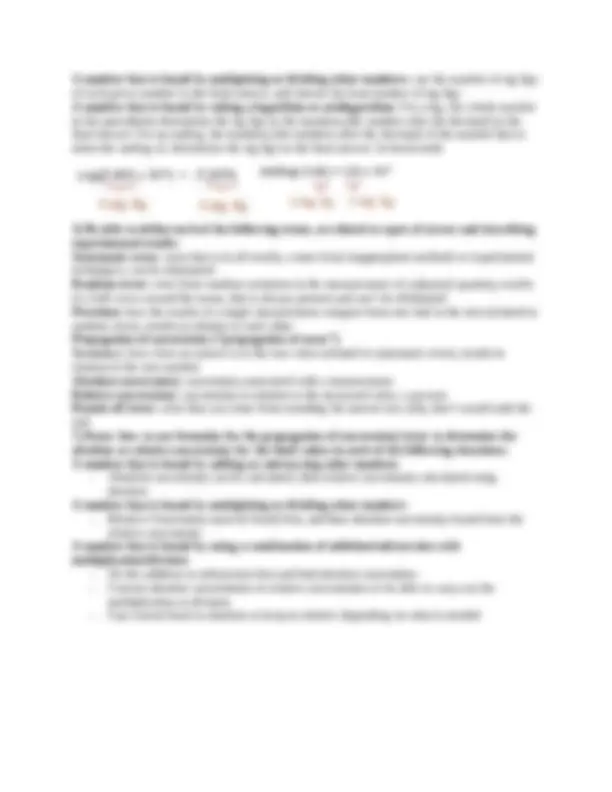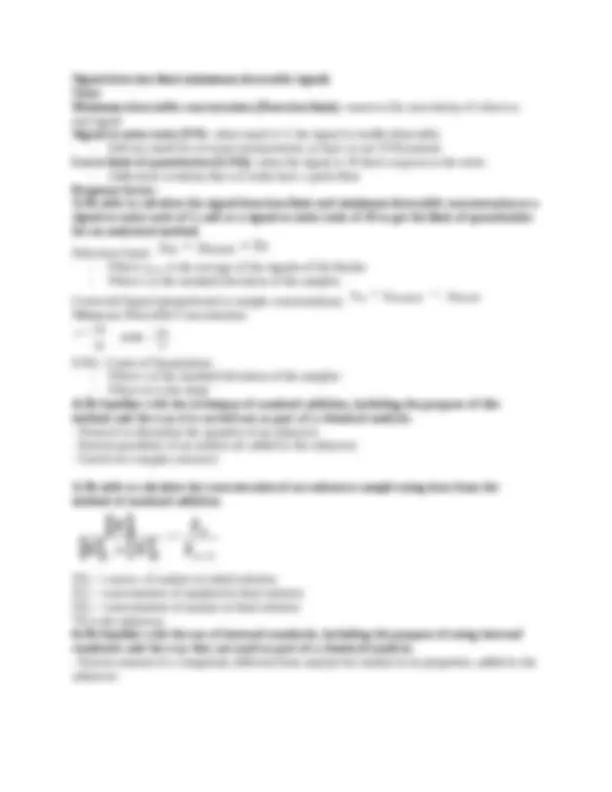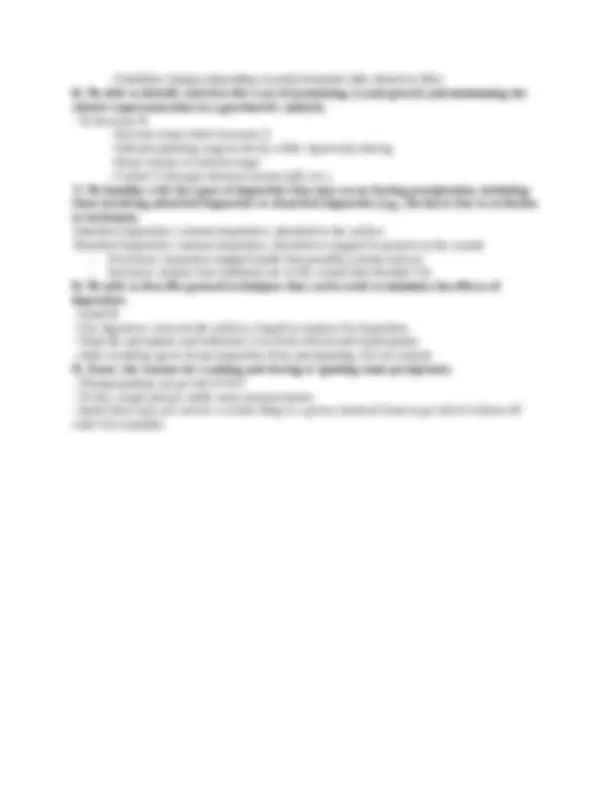








Study with the several resources on Docsity

Earn points by helping other students or get them with a premium plan


Prepare for your exams
Study with the several resources on Docsity

Earn points to download
Earn points by helping other students or get them with a premium plan
Community
Ask the community for help and clear up your study doubts
Discover the best universities in your country according to Docsity users
Free resources
Download our free guides on studying techniques, anxiety management strategies, and thesis advice from Docsity tutors
A comprehensive overview of key concepts in analytical chemistry, including sample preparation techniques, understanding and managing experimental errors, and applying statistical methods for data analysis. It covers various aspects of sample preparation, such as weighing by difference, taring, and addressing buoyancy errors. The document also delves into the importance of error analysis, defining different types of errors, and using formulas for propagation of uncertainty. Additionally, it explores statistical concepts like gaussian curves, standard deviation, confidence intervals, and statistical tests like student's t-test and calibration curves. Valuable for students seeking a thorough understanding of these fundamental principles in analytical chemistry.
Typology: Study Guides, Projects, Research
1 / 10

This page cannot be seen from the preview
Don't miss anything!







Chapters 0-1: The Analytical Process/Measurements 1) Be able to define or describe the following general terms, as related to chemical analysis: Analytical chemistry: the science of chemical measurements Qualitative analysis: what is in the sample Quantitative analysis: how much of the substance is in the sample Wet chemical methods: classical methods (ex: gravimetry, titrations) Instrumental methods: spectroscopy, separation methods 2) Know the seven basic steps that are involved in a chemical analysis, the purpose of each step, and common factors to consider when selecting or using each step.
A number that is found by multiplying or dividing other numbers: use the number of sig figs of each given number in the final answer, and choose the least number of sig figs A number that is found by taking a logarithm or antilogarithm: For a log, the whole number in the parenthesis determines the sig figs in the mantissa (the number after the decimal) in the final answer. For an antilog, the mantissa (the numbers after the decimal) of the number that is taken the antilog of, determines the sig figs in the final answer. Its backwards 5) Be able to define each of the following terms, as related to types of errors and describing experimental results: Systematic error: error that is in all results, comes from inappropriate methods or experimental techniques, can be eliminated Random error: error from random variations in the measurement of a physical quantity, results in a bell curve around the mean, this is always present and can’t be eliminated Precision: how the results of a single measurement compare from one trial to the next (related to random error), results in relation to each other Propagation of uncertainty (“propagation of error”) Accuracy: how close an answer is to the true value (related to systematic error), results in relation to the true number Absolute uncertainty: uncertainty associated with a measurement Relative uncertainty: uncertainty in relation to the measured value, a percent Round-off error: error that can come from rounding the answer too early, don’t round until the end 7) Know how to use formulas for the propagation of uncertainty/error to determine the absolute or relative uncertainty for the final values in each of the following situations: A number that is found by adding or subtracting other numbers
Chapter 4: Statistics 1) Be able to describe the general properties of a Gaussian curve, the general factors used to describe such a distribution, and methods for determining the probability that a given result will occur in a particular range of such a distribution.
Signal detection limit (minimum detectable signal) Noise Minimum detectable concentration (Detection limit): removes the uncertainty of what is a real signal Signal-to-noise ratio (S/N): when equal to 3, the signal is readily detectable